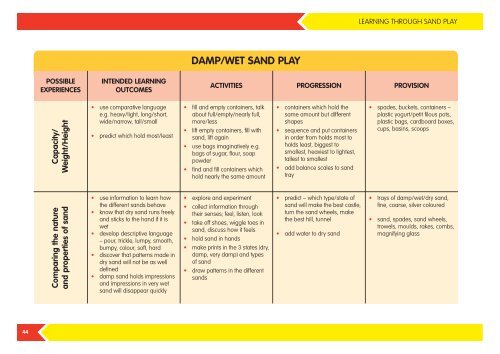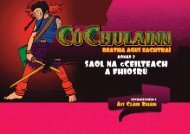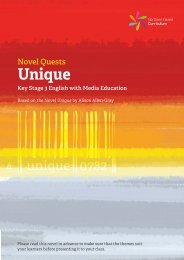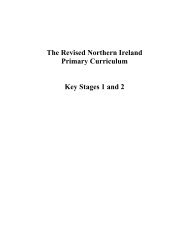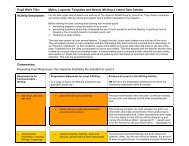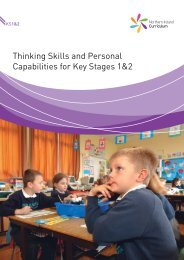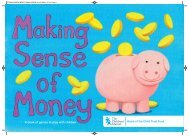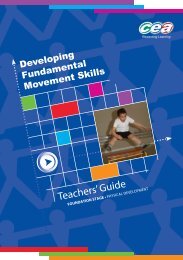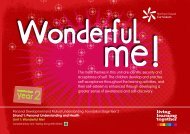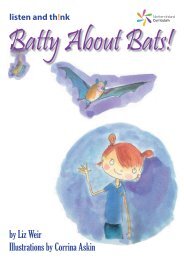(PDF) Foundation Stage, Early Years: Learning Through Play
(PDF) Foundation Stage, Early Years: Learning Through Play
(PDF) Foundation Stage, Early Years: Learning Through Play
Create successful ePaper yourself
Turn your PDF publications into a flip-book with our unique Google optimized e-Paper software.
44<br />
POSSIBLE<br />
EXPERIENCES<br />
Capacity/<br />
Weight/Height<br />
Comparing the nature<br />
and properties of sand<br />
INTENDED LEARNING<br />
OUTCOMES<br />
• use comparative language<br />
e.g. heavy/light, long/short,<br />
wide/narrow, tall/small<br />
• predict which hold most/least<br />
• use information to learn how<br />
the different sands behave<br />
• know that dry sand runs freely<br />
and sticks to the hand if it is<br />
wet<br />
• develop descriptive language<br />
– pour, trickle, lumpy, smooth,<br />
bumpy, colour, soft, hard<br />
• discover that patterns made in<br />
dry sand will not be as well<br />
defined<br />
• damp sand holds impressions<br />
and impressions in very wet<br />
sand will disappear quickly<br />
DAMP/WET SAND PLAY<br />
ACTIVITIES<br />
• fill and empty containers, talk<br />
about full/empty/nearly full,<br />
more/less<br />
• lift empty containers, fill with<br />
sand, lift again<br />
• use bags imaginatively e.g.<br />
bags of sugar, flour, soap<br />
powder<br />
• find and fill containers which<br />
hold nearly the same amount<br />
• explore and experiment<br />
• collect information through<br />
their senses; feel, listen, look<br />
• take off shoes, wiggle toes in<br />
sand, discuss how it feels<br />
• hold sand in hands<br />
• make prints in the 3 states (dry,<br />
damp, very damp) and types<br />
of sand<br />
• draw patterns in the different<br />
sands<br />
LEARNING THROUGH SAND PLAY<br />
PROGRESSION PROVISION<br />
• containers which hold the<br />
same amount but different<br />
shapes<br />
• sequence and put containers<br />
in order from holds most to<br />
holds least, biggest to<br />
smallest, heaviest to lightest,<br />
tallest to smallest<br />
• add balance scales to sand<br />
tray<br />
• predict – which type/state of<br />
sand will make the best castle,<br />
turn the sand wheels, make<br />
the best hill, tunnel<br />
• add water to dry sand<br />
• spades, buckets, containers –<br />
plastic yogurt/petit filous pots,<br />
plastic bags, cardboard boxes,<br />
cups, basins, scoops<br />
• trays of damp/wet/dry sand,<br />
fine, coarse, silver coloured<br />
• sand, spades, sand wheels,<br />
trowels, moulds, rakes, combs,<br />
magnifying glass


